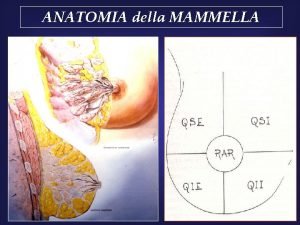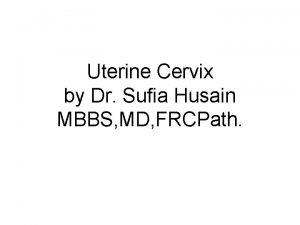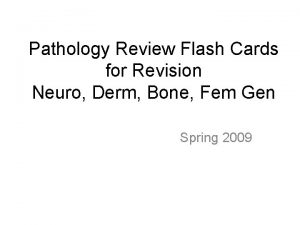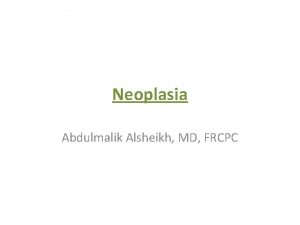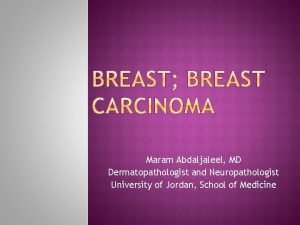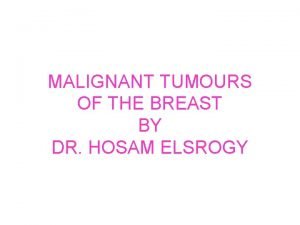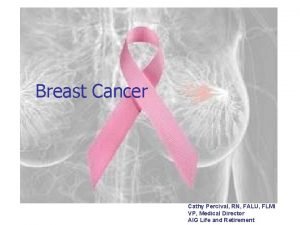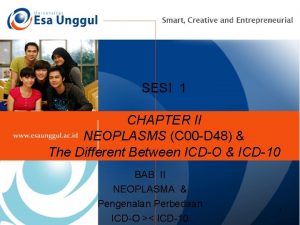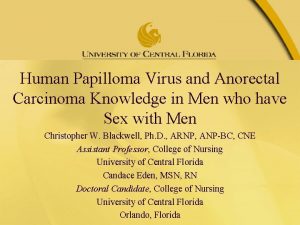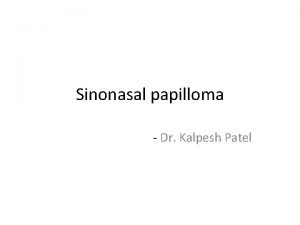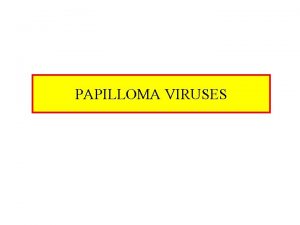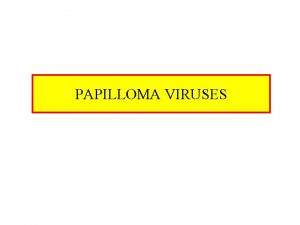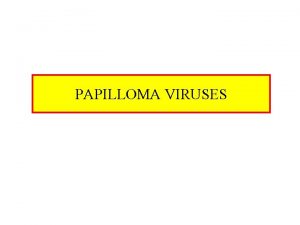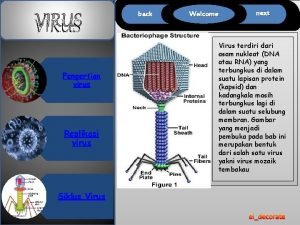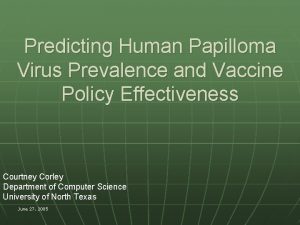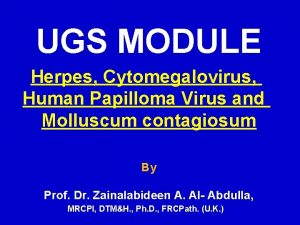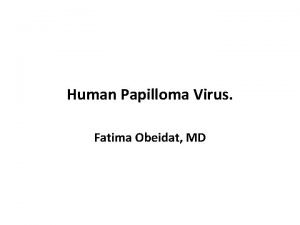HUMAN PAPILLOMA VIRUS and CERVICAL CARCINOMA Roger J













- Slides: 13

HUMAN PAPILLOMA VIRUS and CERVICAL CARCINOMA Roger J Rand

HUMAN PAPILLOMA VIRUS Cervical cancer epidemiology • Coital exposure • Coitus at an early age Cervical morphology • Metaplasia in young women

HUMAN PAPILLOMA VIRUS • One of the most common STDs • 20 - 46% of young women

HUMAN PAPILLOMA VIRUS 3 year study of college women : • 60% infected at some time • Associated with : - younger age, more sexual partners, more sex, more alcohol • Mean duration of infection was 8 months • 34% resolved within 6 months • Only 11% resolved in the following 12 months • Persistence associated with : - High risk types, multiple types, not smoking

HUMAN PAPILLOMA VIRUS • CIN / HPV association in 76% of cases • HPV +ve women have a 9 fold higher incidence of CIN (higher still for high risk types) • High risk HPV types found in : 32. 7% No atypia 46% Mild atypia 60% High grade CIN

HUMAN PAPILLOMA VIRUS • High risk (Oncogenic) 16, 18, 45, 56 • Low risk 6, 11, 40 s • Intermediate risk 31, 33, 35, 51, 52

HUMAN PAPILLOMA VIRUS • Infection induces cell proliferation and delay of cellular differentiation • This ability is dependent on the presence of the oncogenes E 6 and E 7

HUMAN PAPILLOMA VIRUS HPV oncogenes : - • E 6 • E 7 Binds to p 53 Binds to Retinoblastoma (RB) gene Tumour suppressor proteins are inactivated

HUMAN PAPILLOMA VIRUS • High risk types have a high binding affinity for p 53 and RB • p 53 expression blocks entry to the cell cycle until DNA damage is repaired • p 53 repression allows DNA mutations to accumulate and for subsequent cell transformation

HUMAN PAPILLOMA VIRUS • Other cofactors Smoking • Other oncogenes Over expression of epidermal growth factor receptor (EGFR) may allow for progression from low grade CIN

HUMAN PAPILLOMA VIRUS Primary screening • 25% of high grade lesions are -ve for HPV • Predictive value of a +ve test is relatively poor Therefore a useful addition, not a replacement for cytology (May prove be cost effective in older women in whom the prevalence of HPV declines)

HUMAN PAPILLOMA VIRUS Triage of mild dyskaryosis and borderline smears • Disease progression is more likely if high risk types are present

HUMAN PAPILLOMA VIRUS Treatment • Nothing worthwhile for the active infection • Vaccination
 Unità duttulo lobulare
Unità duttulo lobulare Blood clot in nose
Blood clot in nose Dr atiar rahman
Dr atiar rahman Martha rogers theory of unitary human beings pdf
Martha rogers theory of unitary human beings pdf Cervix carcinoma
Cervix carcinoma Papillary renal cell carcinoma
Papillary renal cell carcinoma Neuro derm
Neuro derm Neoplasia
Neoplasia Invasive ductal carcinoma with medullary features
Invasive ductal carcinoma with medullary features Staging of breast cancer
Staging of breast cancer Carcinoma de mama
Carcinoma de mama Carcinoma in situ
Carcinoma in situ Breast cancer biopsy
Breast cancer biopsy Kode icd 10 basal cell carcinoma
Kode icd 10 basal cell carcinoma
